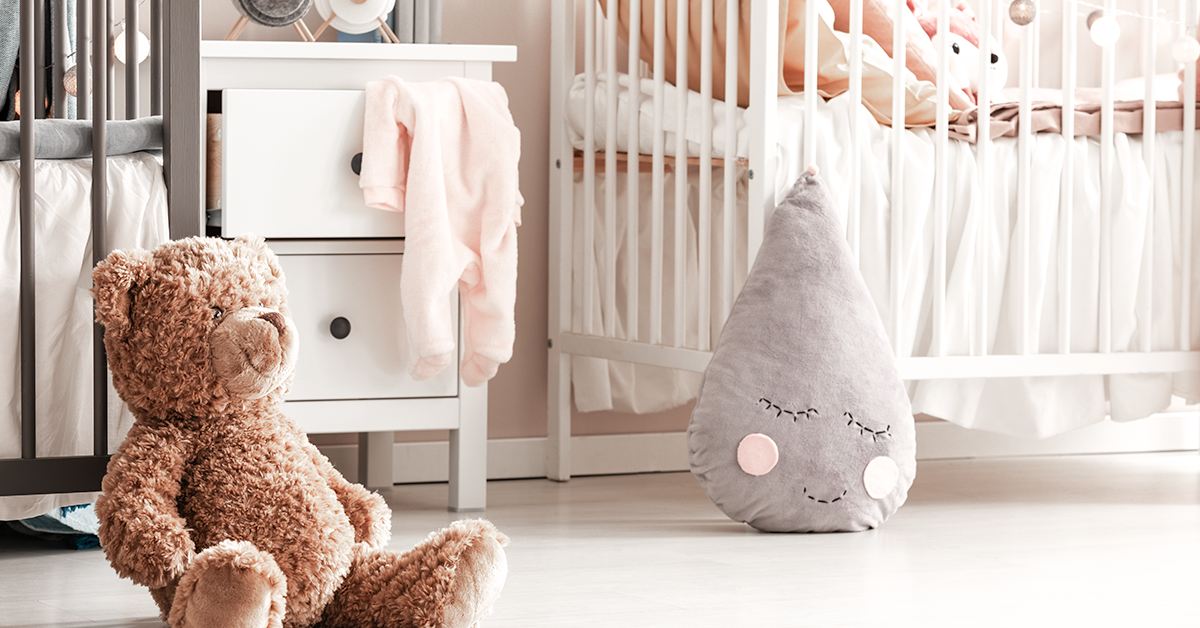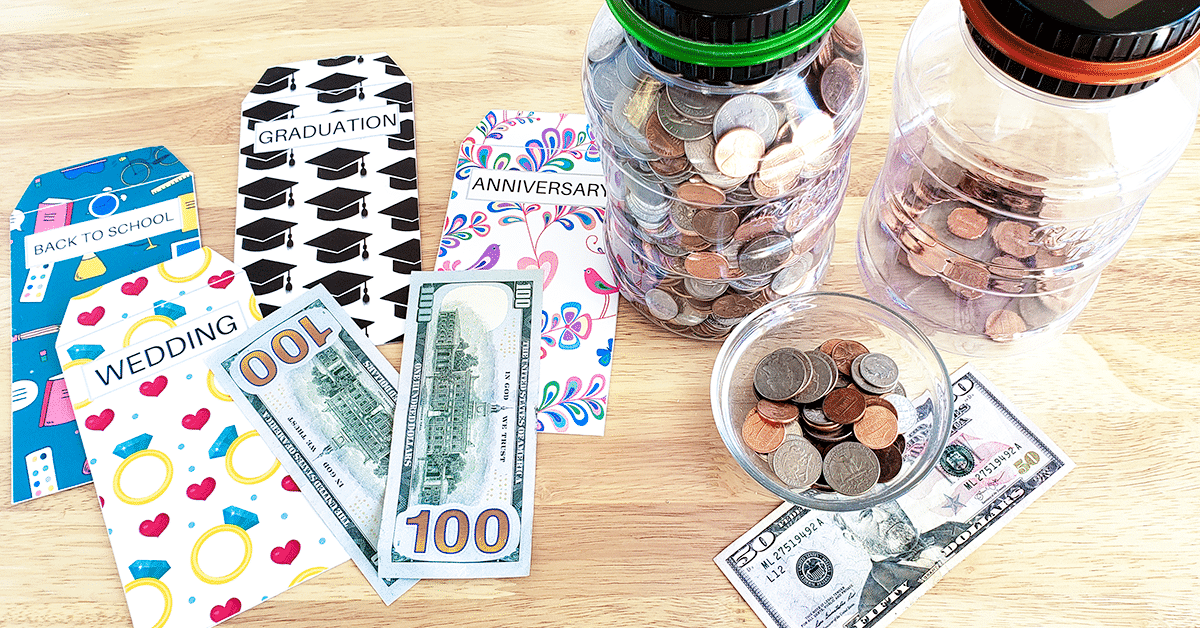
Having a baby is an exciting milestone! It’s a flurry of emotions. And it’s also expensive.
Finances might be the last thing on your mind when you’re an expectant mother. After all, taking childbirth classes, preparing a nursery, committing to parenthood, and eagerly predicting the sex of the baby are probably on the forefront of your mind. However, just as your life is about to change forever, so will your bank account.
The average cost of raising a child from birth to the age of 17 is $233,610.
Yes. You read that correctly: $233,610.
This isn’t my estimate or some number thrown out by out-of-touch wealthy folks on Wall Street. This figure comes from the United States government, specifically the USDA. As if that sticker shock wasn’t enough, you should probably know that that estimate comes from 2015, so it’s probably a little low considering inflation and the cost of college education.
Don’t worry — stay calm and read on. If that number induces a little panic, keep in mind that the figure includes high-income earners and parents from all over the country, where the cost of living may be radically different from where you live.
The point is that no matter who you are, it is wise and prudent to begin financially preparing for a baby now. It is never too late to get on a healthy financial track for you and your family.
Here are a few ideas to consider.
Create Baby Budget Categories
If you’ve been following my blog or YouTube channel, then you know that I am a big fan of budget categories.
For the uninitiated, budget categories are a way to organize your finances into groups or categories that are easy to recognize.
Three common budget categories are food, transportation, and housing.

The food category might include groceries, restaurants, and pet food; the transportation category might include car payments, insurance payments, gas, oil changes, repairs, rideshares, and registration fees; and housing might include your mortgage payment, utilities, HOA fees, and repairs.
Again, these are just examples, but you can see the benefit of grouping finances into categories.
In short, you can easily track your spending trends and habits, isolate areas where you can cut back, and identify potential opportunities for savings.
Now, if you are going to have personal budget categories, why shouldn’t you also have budget categories for your baby?
Here are some categories to consider and plan for:
- Medical costs. The average cost for routine maternity care is $8,775, but this is also dependent on your location. Expectant mothers in San Francisco, for example, are likely going to pay much more than mothers in the midwest. Of course, this average cost doesn’t factor in any insurance or the terms of your healthcare coverage. Because there are so many variables, it is impossible for anyone but you to predict a ballpark figure for how much this will cost. Review your health coverage and know exactly what is covered by insurance.
Keep in mind that medical costs go beyond childbirth itself. Your baby will have regular wellness visits, similar to an annual physical exam. It’s common for baby wellness visits to be scheduled at one week, one month, two months, four months, six months, nine months, and 12 months. - Nursery. Some items might be more obvious than others to plan for. A crib and a dresser, for example, are probably the first two pieces that come to mind for a nursery. But what about a rocking chair for when you’re holding and cooing the baby to sleep? What about a table for changing diapers? Is the room the color you want it to be, or will you need to repaint it? What about the lights? I recommend creating a clear vision of what you want the nursery to look like. Put a vision board together if you need to. Once you have a clear vision for the nursery, you will be able to dissect what you need to plan for and how you will achieve it.
- Transportation. The baby won’t be driving a car, but the baby will still need to travel! A car seat is necessary for every time you drive, including when you’re headed home from the hospital. Consider a stroller for walks or trips out of the house. If your parents are nearby and the baby will be spending time with the grandparents, will you need a portable cradle? What about a baby carrier?
- Nursing and feeding. If you are planning on breastfeeding the baby, consider items like a breastfeeding pillow, burp cloths, or even a cape. Whether you are breastfeeding or using formula, items that every mother will want include bottles, nipples, and cleaning equipment.
- Diapers and hygiene. What goes in during nursing and feeding must come out… Because diapers can be costly, especially over the cost of several months, don’t be afraid or ashamed to ask for diapers during your baby shower. You might be surprised at how much money that can save! Other costs to plan for include baby wipes, baby powder, baby lotion, baby shampoo, and baby conditioner. Remember, babies are so much smaller and more sensitive than us, so it’s important to use baby-specific products on their gentle skin!
- Child Care and Babysitter. Unless you are planning on being a full-time stay-at-home mother (and there’s nothing wrong with that!), maternity leave will eventually end and you will return to work. This raises the question: who will take care of the baby? Unless your partner or parents are fully available, chances are that you will need to plan for child care and/or a babysitter.
These are some of the most common baby budget categories to consider. Of course, every pregnancy and situation is different, so your categories may look different than these. However, feel free to use these as a jumping off point on your journey to planning for a baby!
Perhaps the most important thing is to make sure that you are intentionally saving money now. Every dollar that you put away now is a dollar that you won’t have to worry about later. Better yet, if you can earn safe interest from your savings, then go for it! I personally recommend the CIT Savings Builder, which offers 0.40 APY for families who are intentional about their savings. There are options for High Balance Savers and Monthly Savers, so you’ll be able to find an option that works for you.
Begin Your Baby Budget Now
Planning financially for a baby doesn’t mean that your budget will change the moment the baby is born.

Rather, it means that your current budget should begin evolving now.
Creating baby budget categories will likely mean that your current budget will have to adjust to accommodate the new baby. After all, the money to pay for those things has to come from somewhere.
Step one is to evaluate your monthly budget. Where can you cut back? Or are there any items that you can cut out completely?
Once you identify these items and are able to cut back on expenses, then put those savings into a savings account you can easily access, such as the CIT Savings Builder.
Aside from cutting back on expenses, see if it’s possible to increase your income as well. If you or your partner is due for a raise at work, it might not be a bad idea to bring it up. Or if there are better job opportunities on the market, then begin exploring those options so you can stay on top of your financial goals. Of course, if the day-job situation is stable, another option is to take on a side hustle, freelancing and bringing in extra income on the side.
When it comes to budgeting, one of the things that we don’t often talk about is time.
But similar to investment growth, time and timing make all the difference in the world.
I encourage you to make a timeline of key dates and then to create money-savings goals based off of those dates. This will help ensure that the money is there when you need it.
Dates to consider include: the child due date, child-rearing classes, when you hope to have the nursery built, when you’ll stop working, etc.
Think Long-Term for Both You and Your Baby
Planning for a baby is incredibly important, but it is equally important not to forget your own needs and goals.
New life brings the excitement of new opportunities, but you have to take care of yourself as well.
With that being said, don’t forget about your own future. Make sure that your retirement fund is on the right track. You can do this by building your retirement savings into your budget and paying yourself first at the beginning of every month.
And just as you’re preparing for your own future, prepare for your baby’s future — beyond the stage of infancy.
Remember that eye-popping $233,610 cost we talked about earlier?
That is spread over the course of 17 years.
It includes clothes, food, piano lessons, ballet lessons, little league, sports teams, transportation, allowance… oh, and it doesn’t even include college education!
Start a 529 tax-advantaged account now to begin saving for qualified education expenses years and years down the road. Your investments in this account will be able to grow interest, helping your money go farther than its current value. Some parents even ask for monetary gifts on baby’s first and second birthdays, and then put those gifts into the 529 to help prepare for future educational costs.
If this all seems overwhelming, remember that you have more power and control than you think. Break it down into actionable steps and itemized to-do lists, if you have to. But even if you get overwhelmed, remember that it is possible for you to achieve your financial goals for your family.
Are you a mother? Do you have any other tips for expectant mothers that you wish you knew?

Or… perhaps you are an expectant mother yourself, and you have more questions that weren’t addressed here?
If so, let me know in the comments below! You never know who in the TBM community you may be able to help!

